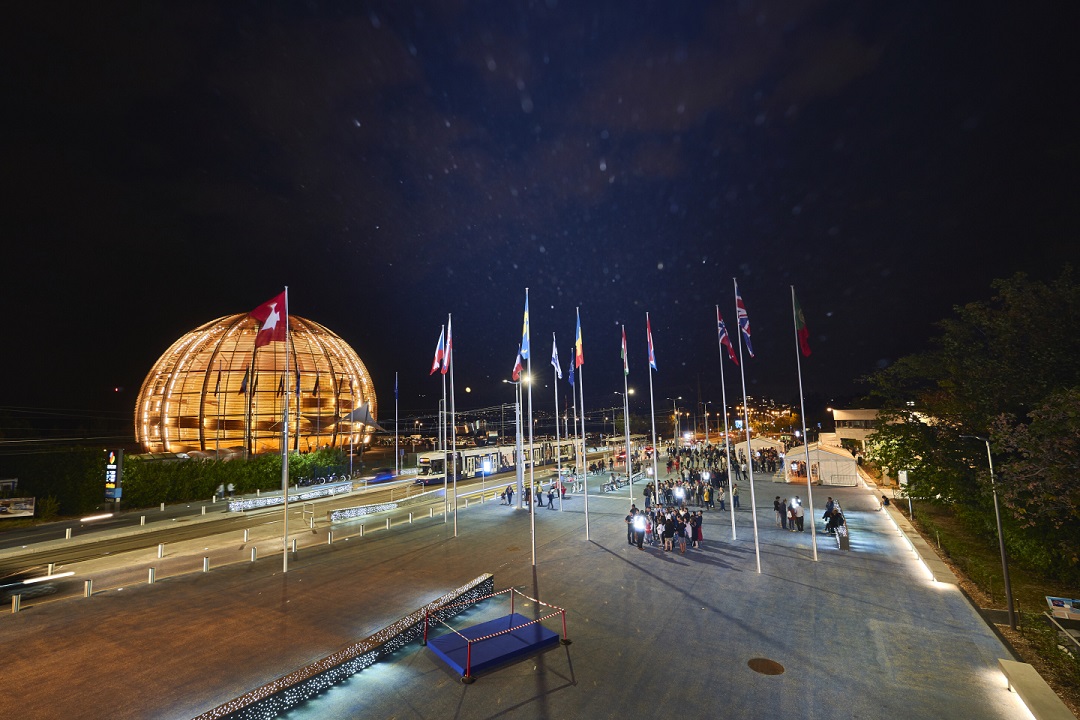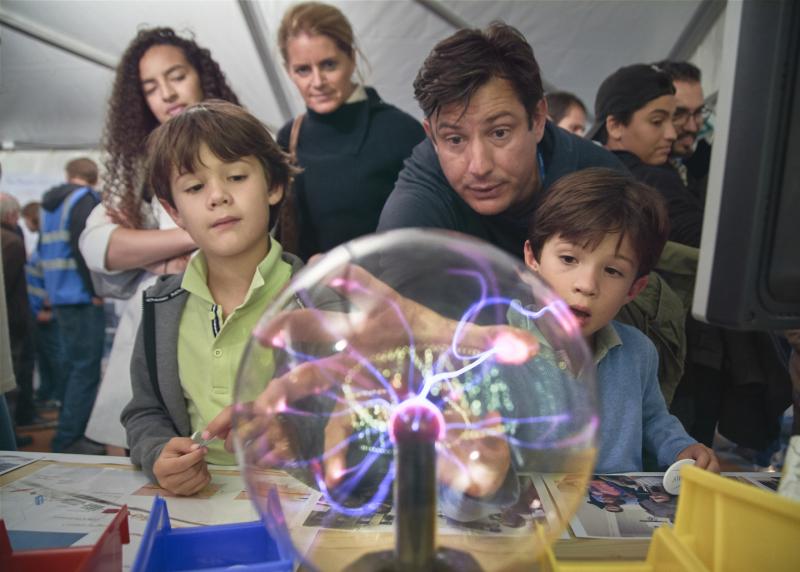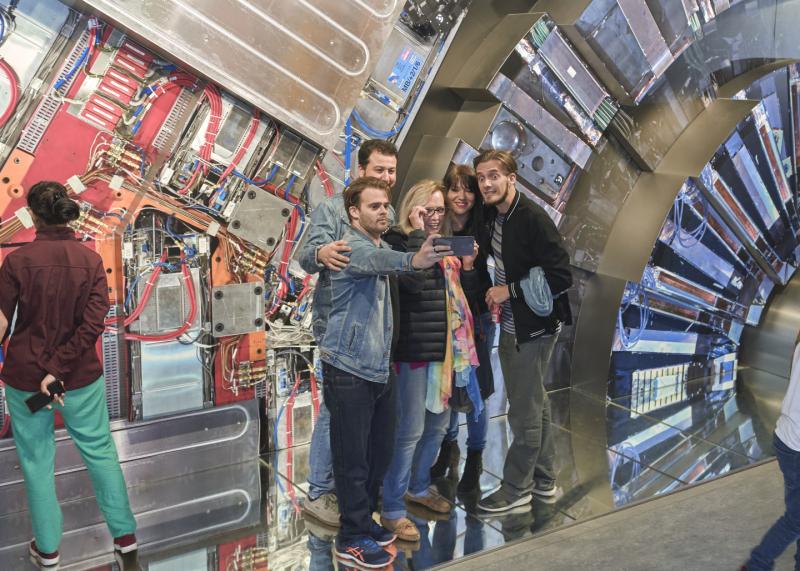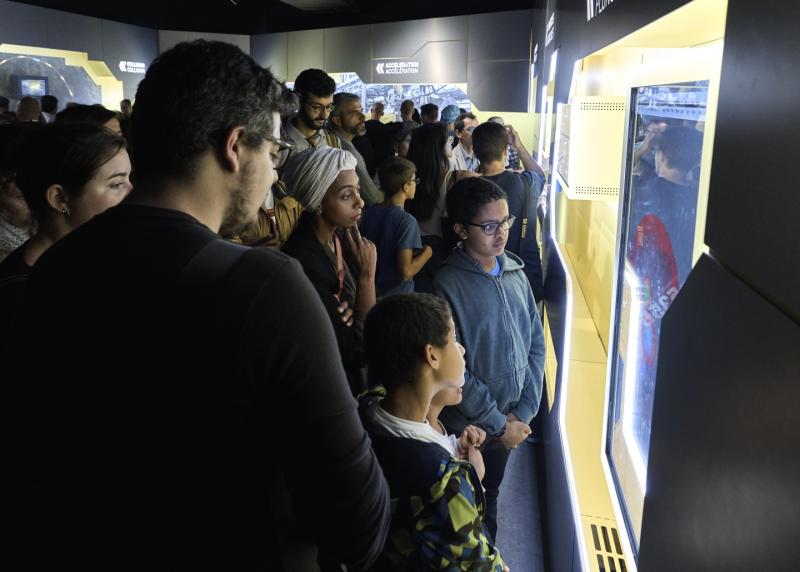
The twenty-two flags of the CERN Member States are fluttering again in front of the Meyrin site. Last Friday, they were hoisted by scientists from each Member State during the inauguration ceremony of the Esplanade des Particules. The flags are arranged in alphabetical order by the name of the country in French, with the first flag (Germany, or Allemagne) closest to the Geneva city centre and and the last flag (Switzerland, or Suisse) closest to Saint-Genis-Pouilly. With the inauguration, CERN’s official address is now “Esplanade des Particules 1”.
The Esplanade des Particules was constructed within the framework of the France-Vaud-Geneva conurbation project following an international urban planning competition. It was financed by the Swiss Confederation, the Republic and Canton of Geneva, the commune of Meyrin, and CERN.
Just after the inauguration, thousands of visitors traversed the Esplanade on the occasion of Researchers’ Night. Activities including workshops, projections, shows and visits were offered to the curious minds. The event was a great success: some 4000 people took part this year, compared to 1500 last year. Around one hundred volunteers were there to enthusiastically answer their questions.


